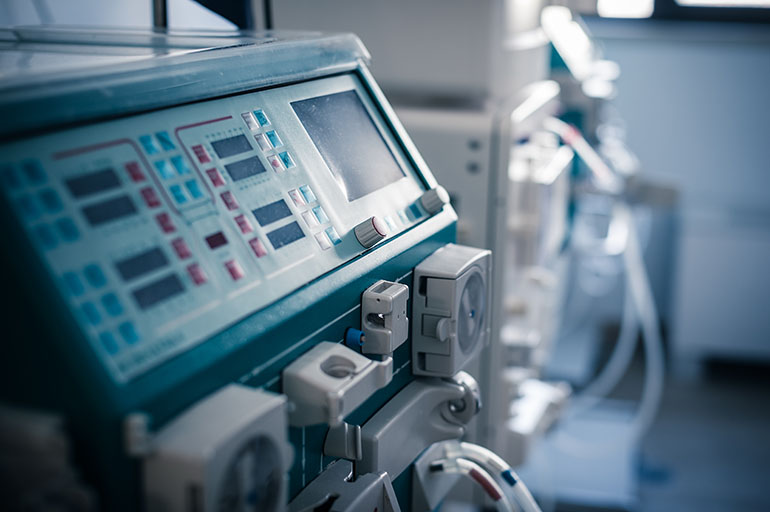Kidney failure costs Medicare close to $30 billion per year, and the disease is only expected to become more common. But new research suggests a path forward that could save money while also improving patients’ health.
The findings, published Monday in JAMA Internal Medicine, suggest that focusing on modifiable factors for patients with chronic kidney disease, such as promoting early access to nephrologists, could improve overall care, prevent complications and cut health spending.
Adult patients experiencing end-stage renal disease, who generally are eligible for Medicare, were as much as four-to-six times more likely to need emergency treatment than the average Medicare beneficiary. But many of those expensive visits, the researchers suggest, could have been avoided.
“These people represent less than 1 percent of the Medicare population, and they take up more than 7 percent of the Medicare budget,” said Rachel Patzer, director of health services research at the Emory Transplant Center, an assistant professor of surgery at the university’s medical school and one of the study’s co-authors. “We’re trying to focus on what’s preventable. What can we do about it?”
A fair bit, the analysis suggests.
This research is the first to examine how this population uses the emergency room, and to use that as a lens to understand what kind of medical care they receive. It identified which patients were most likely to seek more expensive emergency care, and how often they went on to need hospital treatment.
The researchers analyzed Medicare claims data for patients 18 or older who were diagnosed between January 2005 and December 2011 with the kidney disease — usually caused by conditions like high blood pressure of diabetes, and treatable through dialysis or surgery. Because Medicare generally covers end-stage renal disease for the non-elderly patients and those older than 65, the claims data reflected a national sample, the authors wrote.
And there was a theme to their conclusions: “Much better access to care is a really big factor here,” Patzer said.
For one thing, the researchers found, emphasizing preventive medicine for patients who are at risk of end-stage renal disease but don’t yet need dialysis could make a big difference. Patients that received such care, they wrote, which would include regular access to kidney specialists or to pharmaceutical interventions such as a particular hormone supplement that controls the worsening of kidney function, were far less likely to go to the emergency department. That matters in terms of improving the quality of care, and could also make “a substantial dent” in public health spending, Patzer said.
For patients who do require dialysis, certain factors in their regular treatment — such as the use of catheters, which are inserted in the vein during such treatments, were much more likely to lead to patients’ infections and send them to the emergency room, Patzer said. That suggests some of these visits could be averted by treating patients instead with a fistula, a dialysis insertion that is more sophisticated but also takes more time to properly settle into the patient’s body.
The analysis doesn’t note what sorts of changes would be most cost-effective, or attach a dollar amount to the potential savings. That, Patzer said, would be an important line for further research.
It has long been known that kidney failure patients are among the most costly, noted Dr. Howard Forman, a professor of diagnostic radiology at Yale School of Medicine and director of its public health school’s health care management program. And this analysis helps illuminate how to address that issue, he added. Foreman was not involved with the JAMA research.
From a medical care standpoint, he said, it’s important to better coordinate treatment for patients, so that they have someone in charge of making sure they don’t get sicker. Treating advanced kidney disease is complicated, and requires a patient to visit a plethora of health professionals. Communication between those providers can get spotty, and there’s no one person invested in keeping track of the person’s overall health.
“These are patients interacting with the health system 200, 150 times a year, minimum,” he said. “They have points of care with the dialysis provider, the endocrinologist, the home health care aide, the vascular surgeon, the radiologist. We need someone who is willing to coordinate care for the patient, so their health is paramount.”
But there are other issues to work out. Many people learn only upon visiting the ER that they are experiencing advanced renal disease, Patzer said, a shortcoming that highlights the need for early access to kidney specialists.
The analysis found that kidney failure patients who were younger, female or black had greater odds of visiting the emergency department. The same held true for “dual eligible” — people who, in addition to Medicare, were enrolled in Medicaid, the federal-state insurance program for low-income people. That, Patzer said, highlights deeper inequities in the health system, and underscores their financial and public health implications.
Academics and policy makers need to better tease out what drives those inequities and ways to address them, she said. But there are themes.
“These are patients who didn’t have access to preventive care early in the course of their lives. It doesn’t start with a diagnosis of end-stage renal disease,” she said. “Throughout their lives, they have had less access.”
If health care providers figure out a way to undercut ER usage here, Forman said, that could provide a model for other diseases. And, he said, it could result in vastly improved care for patients at a better price point.
“This could be a microcosm for other health care challenges that may be smaller populations, but add up to a lot of money,” he said. “There’s an opportunity for both the patient to receive higher quality, better quality care, and for the Medicare program to see lowered expenses.”







